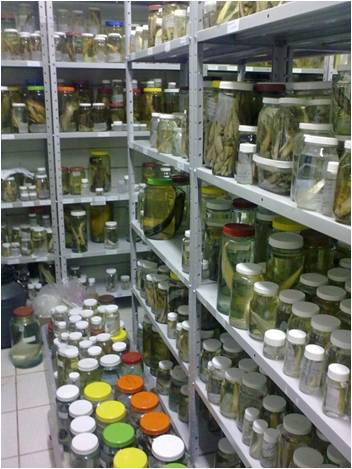Languages
What are biological collections?
 Biological collections are one of the most important tools for obtaining information on the composition, distribution and content of biodiversity in a given environment. Such information is essential for the development of scientific research, for environmental modeling to support Government decision-making on issues of land use, and for the development of strategies for the conservation and utilization of this national resource base.
Biological collections are one of the most important tools for obtaining information on the composition, distribution and content of biodiversity in a given environment. Such information is essential for the development of scientific research, for environmental modeling to support Government decision-making on issues of land use, and for the development of strategies for the conservation and utilization of this national resource base.Biological collections are also a cumulative body of knowledge generated over time. It is also a comprehensive geographic and temporal panorama, a cultural heritage that is witness to the rich history of a given territory. A biological collection represents a starting point for studying the diversity of a region, one where specialists, ecologists, zoologists and botanists may seek and obtain information that helps them identify the objects of any given study.
Knowledge of the biodiversity of any given region generally proceeds through four main stages:
(1) intensive collection of individuals in their habitats;
(2) specimen preparation;
(3) sorting, cataloging and identification; and
(4) the inclusion of these individuals, considered as material-witnesses, in scientific collections of institutions committed to preserving this biological heritage.
With the advent of computer technology and real time virtual networks, collections have been organized in databases using specific computational platforms designed for scientific collections, and linked to international networks through the Internet. This process contributes to decision-making, and public policy definition, as well as the integration of the information produced by biodiversity scientists and that used by the administrators of government programs.

